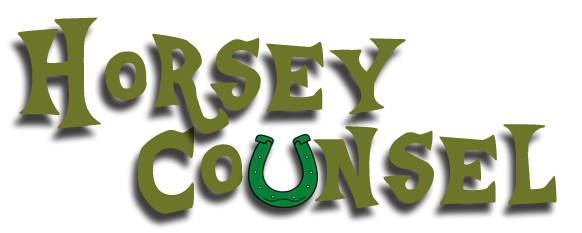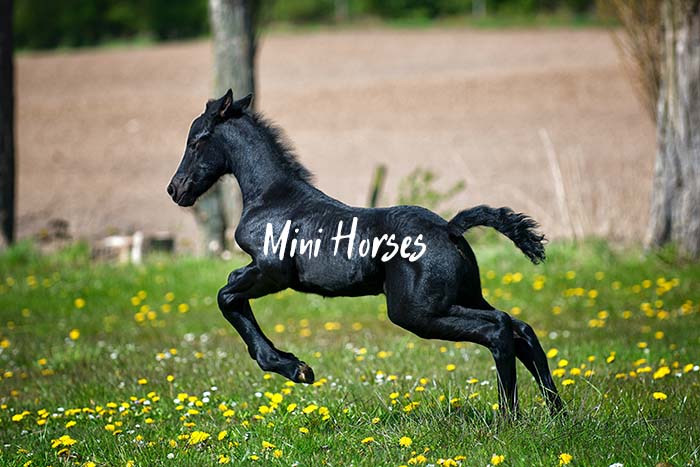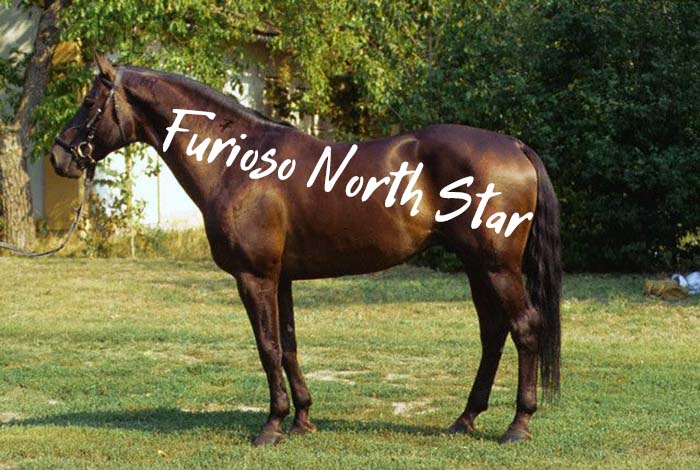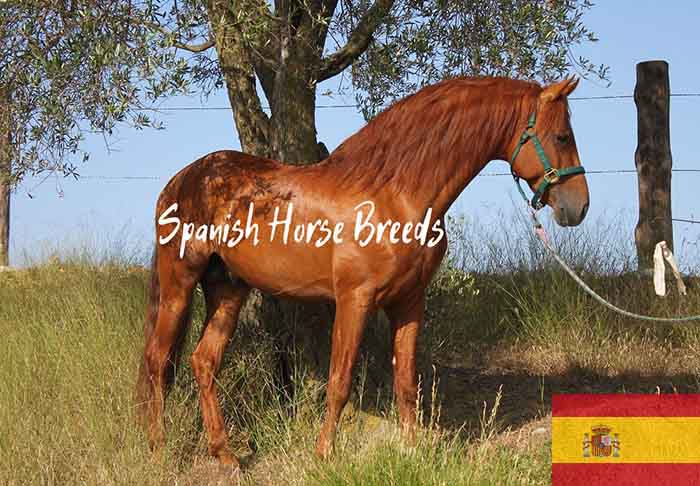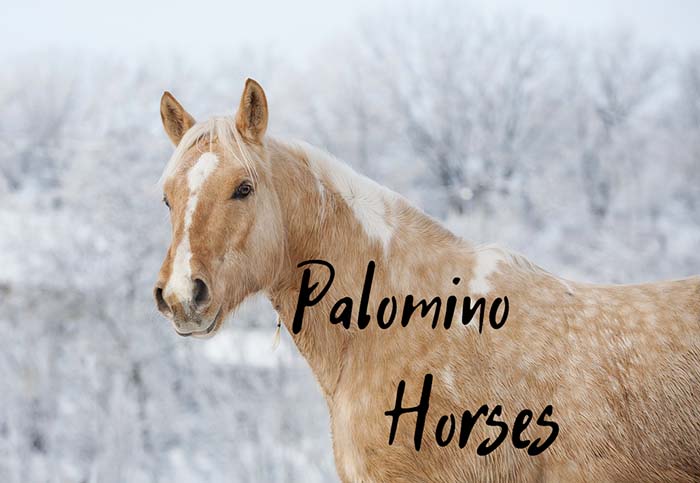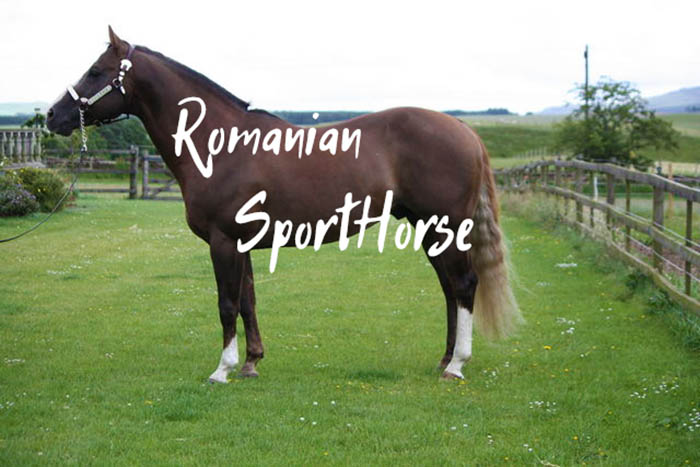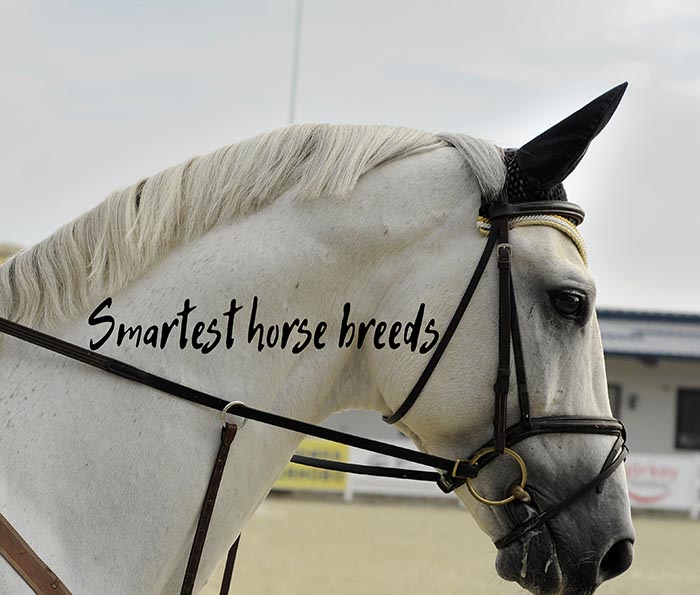These Are the 8 Largest Horse Breeds in the World
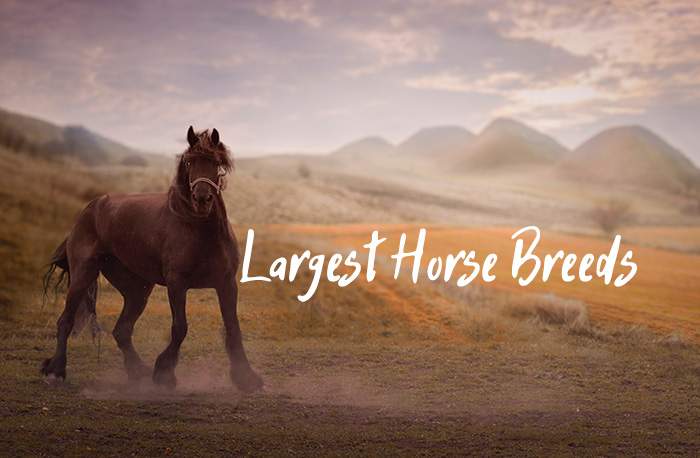
Out of the many horse breeds that you will find around the world, some of them manage to stand out thanks to sheer size. The largest horse breeds in the world are truly magnificent, whether we’re talking about the Dutch Draft, the legendary Clydesdale, or the imposing Shire.
Breeding horses is a complex process, one that I aim to cover in full in a separate article. However, I wanted to touch a bit on the subject of purebred horses, as the largest horse breeds in the world are maintained through selective breeding. Large horse breeds are stronger and more imposing when compared to smaller breeds, but they’re not necessarily faster. They might be better re hauling or other strength-related activities, but they also need to be kept in check weight-wise, as too much weight can put excessive stress on their joints.
Therefore, owning and caring for a larger horse is not a walk in the park. The owner needs to make sure that the horse gets enough exercise, and that it follows a proper diet throughout its life. Below you will find a list of the absolute largest horse breeds in the world, and you’ll be able to learn quite a bit about each one.
One thing worth noting is that the height of a horse is not measured in feet but hands. It’s a bit weird, I know, but it’s common practice, so we’ll just have to get used to it. One hand represents four inches, so keep that in mind as you go forward. Also, a horse’s height is measured at the withers, which is the ridge between the shoulder blades.
8. Dutch Draft (16 hands).
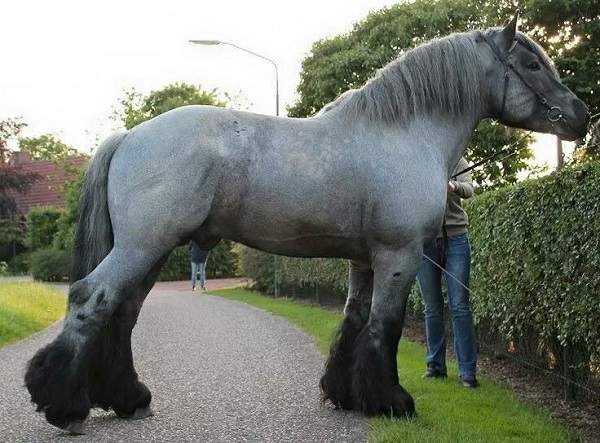
The Dutch Draft is an incredibly beautiful and imposing horse. It is known as a cold-blooded horse, and so it has a very mild temperament. The breed traces its roots back to the 20th century in Zeeland, which is why it is also known as the Zeeland Horse in some parts of the world.
The Dutch Draft breed was created via cross-breeding between Belgian Ardennes and local Zeeland mares. This breeding process began shortly after the end of World War I, and the result was one of the most important Dutch breeds in the world. The height of popularity for these horses lasted until the end of World War II. However, when agriculture met technology, the role of the Dutch Draft in households and on farms became rather obsolete.
In our modern days, there were about 1424 Dutch Draft horses left in the world in 2009. Fortunately, there are two main associations of breeders that aim to keep this large and beautiful horse alive. Therefore, the breed is currently not endangered
The Dutch Draft male usually weighs in at 1650 pounds and is 16 hands or 64 inches/164cm tall. The female is a bit lighter at 1540 pounds. You can recognize a Dutch Draft horse easily due to its heavily feathered legs. They are quite a sight to behold in person, I can attest to that.
7. Hanoverian (up to 17.2 hands).
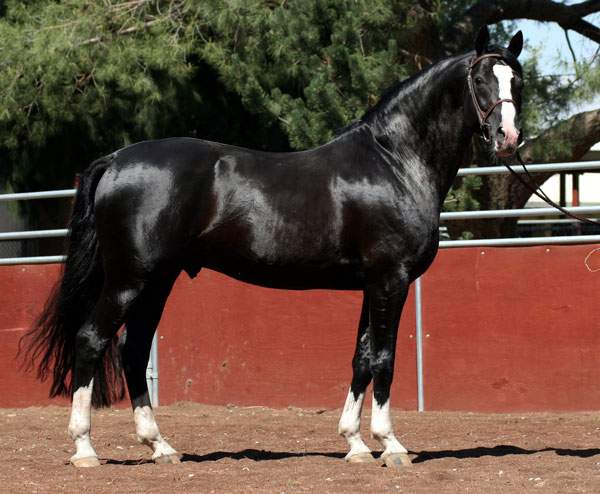
The Hanoverian horse is known for its incredible agility, good temperament, and grace. Even though it was originally a carriage horse, it is now seen in numerous competitions, particularly equestrian Olympic competitions.
Regarding its history, this warmblood ties in with King George II, who founded State Stud at Celle in 1735. He bought multiple stallions suited for agriculture work, and he mated the local mares with studs from breeds such as Cleveland Bay, Prussian, Andalusian, and Holsteiner. In 1884, stallions could be used for the sole purpose of breeding if they were chosen specifically by a commission. Seizing the opportunity, some breeders formed a society that had one singular purpose in mind: to create an excellent coach and military horse – the Hanoverian.
As with most horses, the Hanoverian lost its popularity after World War I, but it regained it after World War II when sport horses became in high demand. The Hanoverian is a powerful horse with a strong back and very strong limbs. It is highly trainable, and it is capable of performing impressive athletic feats.
While the Hanoverian can reach an impressive height of 17.2 hands, most will peak at 16–16.2 hands. You will see this horse most often as black, bay, chestnut, and gray. Hanoverians take part in dressage, eventing, and show jumping.
6. Holsteiner (up to 17 hands).
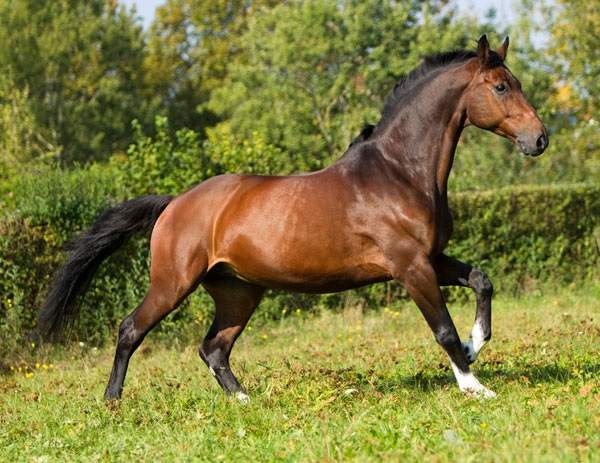
The Holsteiner is an athletic riding horse and probably one of the most elegant of the large horse breeds. The breed hails from a region in Northern Germany named Schleswig-Holstein, hence the name. Furthermore, it is believed that this is the absolute oldest warmblood breed, as there are records of its existence dating all the way back to the 13th century.
Since it is a sport horse, this breed was intended for show jumping, and these horses definitely excel at it, to say nothing of dressage, eventing, and combined driving. The gait of the Holsteiner breed is heavily influenced by the horse’s exceptional jumping ability. Being able to jump high does come with a series of drawbacks, such as a lack of quality for the trot and walk. However, the canter of Holsteiners is light, balanced, soft, and sometimes dynamic.
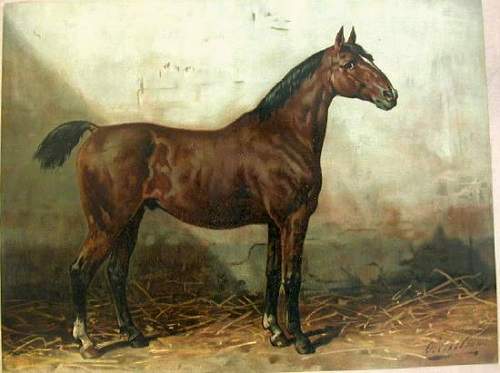
In terms of appearance, this 1898 lithograph of a Holsteiner horse showcases its main characteristics, including a bay coat as well as a docked tail, which is most commonly seen in coach horses. It is a truly beautiful image, one that fully captures the elegance and refinement of the breed. Just look at those beautiful, intelligent eyes!
The most famous of the Holsteiner breed is a horse named Meteor – a powerful jumper that has its public sculpture in Schleswig-Holstein’s capital city of Kiel.
While officially a medium-framed horse, the Holsteiner can reach up to 17 hands in height, while approved stallions must be a minimum of 16 hands. The coat is primarily bay and gray.
5. Belgian Draft (17 hands).
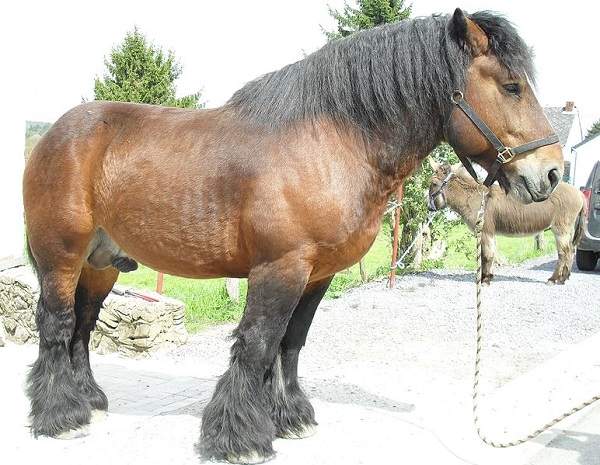
The Belgian Horse or the Belgian Draft is currently known as one of the best draft horses in the world. It’s incredibly popular in the States, as it is the most numerous breed of draft horse, which speaks volumes for its incredible pulling ability. The Belgian hails from the Brabant region of current-day Belgium, and it’s worth noting that it shares many similarities with the Brabant breed. Actually, the Belgian and the Brabant were the same breeds until the 1940s.
However, after World War II, the Belgian was bred in the states to be taller and lighter, while Europe’s Brabant became heavier and with a thicker body. At this point, the two breeds went on their different paths.
As far as height is concerned, the Belgian Draft usually reaches about 17 hands, and it weighs somewhere at around 2000 pounds. There is one notable exception to the rule, though, and that is Big Jake – the tallest horse in the world. That’s right, the world’s tallest horse is a Belgian Draft, a gelding born in 2000 that proudly stands 20.2 hands in height. He is 82.75 inches or 210 cm tall, which is amazing! When it comes to overall size and weight, the world’s largest horse also used to be a Belgian Draft – Brooklyn Supreme, who weighed 3200 lb and stood at 19.2 hands.
4. Percheron (up to 18.1 hands).
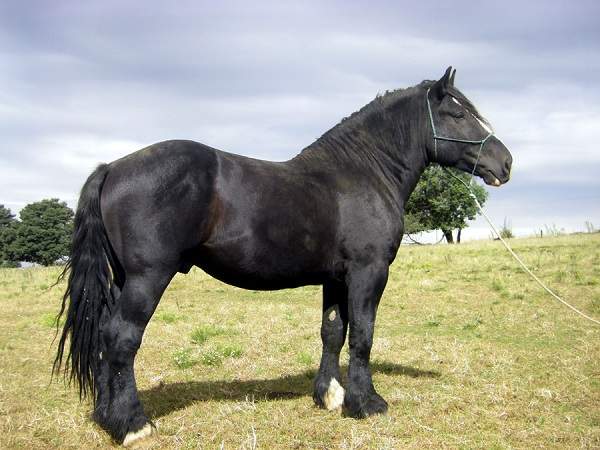
The name says it all, right? The Percheron is a French horse breed that originates in the Huisne river valley in western France. Nobody knows exactly how this breed came to be, as its origins are largely unknown. However, records state that this type of horse has been present in the aforementioned river valley by the 17th century. The Percheron was originally a warhorse, but due to its strength, intelligence, and willingness to work, it was also used in agriculture and for hauling goods.
In the 19th century, France started to export many Percherons to the United States, but during World War I, the US shipped many of them back to help with the war effort. These horses saw plenty of action during wartime. They are very well muscled which makes them incredibly powerful, but they are also quite docile and easy to work with.
The Percheron is a tall horse, but its height varies considerably depending on its country of origin. For instance, these horses are known to be between 15 and 18.1 hands in France, while those in the United States are shorter at 16.2 to 17.3 hands. The coat is usually grey or black, and the most common weight is 1900 lb in America. It’s also worth mentioning that breeders added some Arabian blood to the breed during the 18th and 19th centuries.
Truly a magnificent and imposing horse, the Percheron currently enjoys a thriving population. Since 2009, the numbers have been increasing at a steady pace, and there are about 2,500 annual horse registrations for this breed in the US alone.
3. Suffolk Punch (up to 17.2 hands).
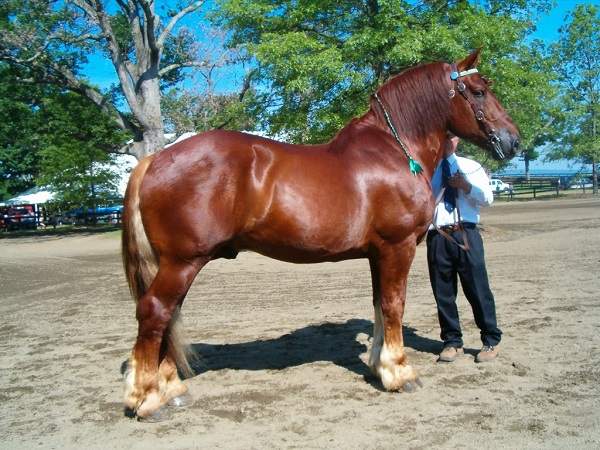
The largest horses in the world are usually draft (draught) horses, which makes sense, I suppose. The larger the horse, the more powerful it is, and the more it can pull. In the case of the Suffolk Punch, even its name gives off a feeling of strength and sturdiness. Indeed, this is one of the finest English horse breeds, particularly if you’re looking for a strong and dependable farm animal.
The Suffolk Punch was named after the county of Suffolk in East Anglia, and the breed traces its roots back to the 16th century. This breed was developed specifically for farm work, and it became increasingly popular during the early 20th century. However, as with most breeds, it lost favor in the face of mechanized agriculture, and at some point, the breed almost disappeared completely.
The UK Rare Breeds Survival Trust and the American Livestock Breeds Conservancy currently list the Suffolk Punch as critical, but the good news is that numbers are steadily increasing across the board. Hopefully, the breed will be crossed off the critical list soon.
These horses can grow up to 17.2 hands in height, and they weigh 1,980 to 2,200 pounds. One thing that sets them apart from other breeds is that they are always chestnut in color. That being said, the shades of chestnut can vary from dark chestnut to red or light chestnut.
2. Clydesdale (18 hands).
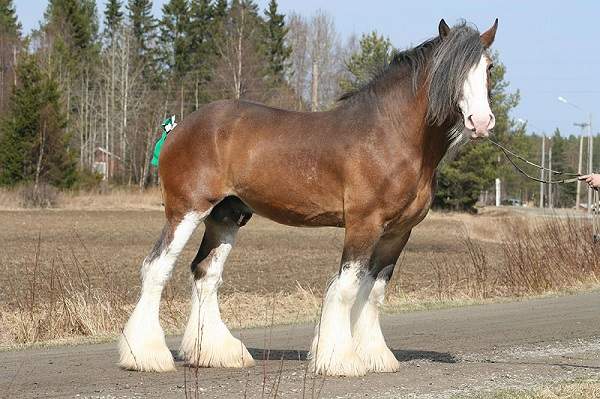
What’s interesting about the Clydesdale is that it wasn’t always a large horse breed. Originally, these horses were quite modest in size, but the breed changed dramatically over the years. The name of the breed comes from the Clydesdale county in Scotland, and the first recorded reference of the Clydesdale breed was in 1826. Back in the day, farmers imported Flemish stallions and crossed them with local mares to obtain this unique breed.
This horse is still being used for the draft to this day. During World War I, intense mechanization caused its numbers to drop significantly, and at some point, the breed was in danger of going extinct. It’s still vulnerable to this day, mind you, but numbers are increasing at a slow pace. There’s hope for the Clydesdale still.
When it comes to height, stallions can sometimes surpass 18 hands, and they can weigh up to 2,200 pounds. Some of the more unique characteristics of the Clydesdale include its white markings and feathering. They are generally bay, and they have a broad forehead, a wide muzzle and, a convex facial profile.
1. Shire Horse (17 hands minimum).

The Shire horse breed is widely recognized as the largest in the world. The breed shattered record after record in its time, and it’s still unbeatable when it comes to sheer size and height. Now, we know that these horses are big, but how exactly did the Shire breed come about anyway.
To find an answer to this question, I went on a bit of a learning spree myself, and I decided to study the history of these amazing horses. As we all know, horses were used in battle extensively before the gunpowder era, but they were also used for farm work as early as 1145. During that time, you could find horses on sale for “dray, the plow, or the chariot” at London’s own Smithfield Market. People needed strong horses for fieldwork, and with the arrival of gunpowder, large horses were no longer the go-to choice for cavalrymen, as the army now favored lighter and faster horses suited for harassment and hit-and-run tactics. But I digress.
The Shire breed traces its roots to the English Great Horse and the Old English Black Horse from the 17th century. The Shire horse term was used for the first time during the first half of the 17th century with incomplete records beginning to surface by the end of the 18th century. Back then, the Packington Blind Horse was the most famous horse of the time, and it is believed that he is the founding stallion of the Shire breed.
By now, it should be clear that the Shire originated in the United Kingdom. It is a very powerful draft horse, and stallions of this breed are usually at least 17 hands tall. They weigh between 1980 and 2425 pounds, so calling them massive is quite the understatement. As far as colors are concerned, they can be black, brown, bay, or grey. Aside from their imposing size, Shire horses can also be distinguished by their feathered legs.
Final words.
Some of the largest horse breeds that we see and love today were created for heavy farm work or use in wartime. Many of these breeds lost significant numbers due to mechanization, but conservation societies are constantly keeping an eye on the numbers.
Large horses are often used for showmanship, as they inspire more awe when compared to the smaller breeds. While some of them are incredibly agile and can jump very high, some feel more at ease on the farmstead. The behaviors and main traits of horses vary greatly between the breeds, and there are more than 300 breeds of horse in the world today. More often than not, each breed was designed with a specific purpose in mind.
If you have anything that you would like to add, be it constructive criticism or tales from your own experience, don’t hesitate to get in touch.
Images courtesy of HorseBreedsPictures
